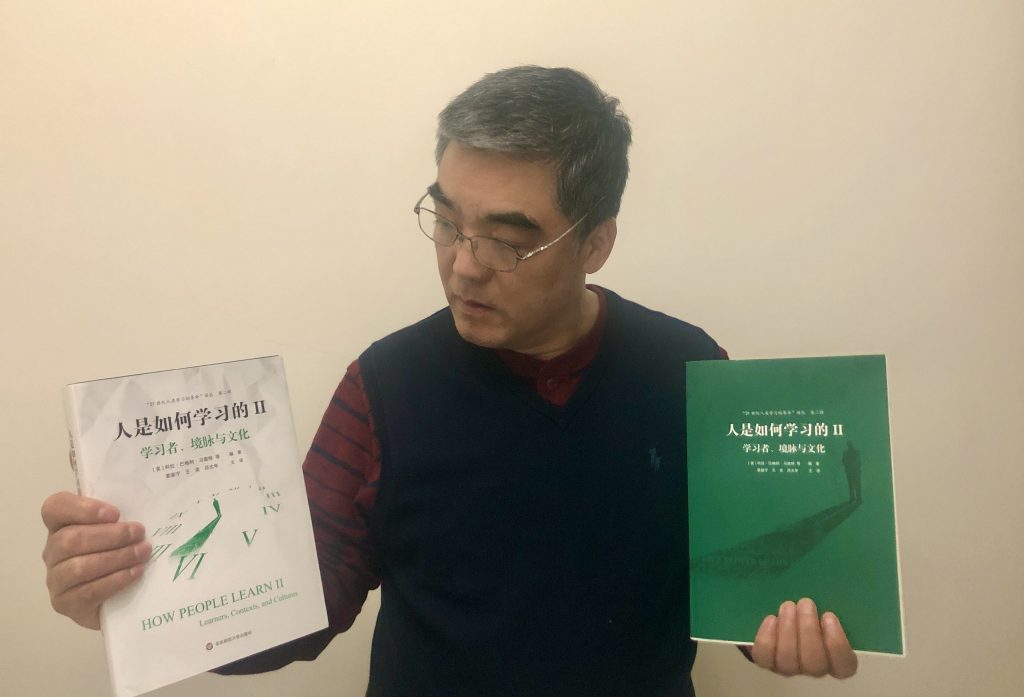《人是如何学习的》II已经出版上架了!
之前,自留地君在《好书推荐:《人是如何学习的》》推介过!
从这一期开始,自留地将分三期,中英文对照分享和简短点评该书所总结的二十一条结论,每一期7个结论,欢迎持续关注!

结论2-1
每个学习者都会在生命进程中发展出独一无二的知识序列和认知资源,它们由学习者的文化、社会、认知及生物等境脉的相互作用所塑造。理解“人如何学习”,其核心在于理解学习者在发展、文化、境脉和历史上的多样性。
CONCLUSION 2-1: Each learner develops a unique array of knowledge and cognitive resources in the course of life that are molded by the interplay of that learner’s cultural, social, cognitive, and biological contexts. Understanding the developmental, cultural, contextual, and historical diversity of learners is central to understanding how people learn.
自留地点评:这个结论申明学习是一个受多因素影响的复杂系统。也指出了只有透过理解学习者发展、社会文化、境脉以及历史上的多样性(也就是复杂性),才能理解和解释人是如何学习的。
结论3-1
个体学习者不断有意或无意地整合多种类型的学习,以应对其遇到的情况和挑战,学习者整合学习功能的方式由其所处的社会和物理环境所塑造,同时这也塑造了其未来的学习。
CONCLUSION 3-1: The individual learner constantly integrates many types of learning, both deliberately and unconsciously, in response to the challenges and circumstances he encounters. The way a learner integrates learning functions is shaped by his social and physical environment but also shapes his future learning.
自留地点评:这个结论得到了许多学习心理学和发展心理学家研究的支持。皮亚杰和新皮亚杰学派的“同化”和“顺应”也差不多是这个意思。
结论3-2
脑的发展贯穿人的整个生命过程,遵循着一条人类大体一致的轨迹,但也会由于每个学习者的环境和经验而富于个性化。脑逐渐成熟,能够产生复杂的认知功能,并且在对挑战的适应中表现出神经学层面的可塑性。
CONCLUSION 3-2: The brain develops throughout life, following a trajectory that is broadly consistent for humans but is also individualized by every learner’s environment and experiences. It gradually matures to become capable of a vast array of complex cognitive functions and is also malleable in adapting to challenges at a neurological level.
自留地点评:大脑与学习的关系密切而复杂。最近一些年,将有关脑神经科学研究的成果整合到教育实践之中,必须经由其对学习的启示和意义而实现。、
结论3-3
脑发展与学习之间是互惠的关系:学习是通过相互依赖的神经网络进行的,同时,学习与发展也会涉及神经联结的持续塑造和重塑,以响应外界的刺激和需求。脑的发展影响个体的行为和学习,反过来,学习也影响脑的发展与健康。
CONCLUSION 3-3: The relationship between brain development and learning is reciprocal: learning occurs through interdependent neural networks, and at the same time learning and development involves the continuous shaping and reshaping of neural connections in response to stimuli and demands. Development of the brain influences behavior and learning, and in turn, learning influences brain development and brain health。
自留地点评:这个结论很好地解释了大脑的发展与学习之间的互惠关系和相互作用。
结论4-1
成功的学习需要协调多种认知过程,这些过程涉及大脑中的不同网络,为了协调这些过程,个体需要能够监控和协调自身的学习。监控和调节学习的能力再人的成长过程中是变动不居的,并可通过干预措施加以改进。
CONCLUSION 4-1: Successful learning requires coordination of multiple cognitive processes that involve different networks in the brain. In order to coordinate these processes, an individual needs to be able to monitor and regulate his own learning. The ability to monitor and regulate learning changes over the life span and can be improved through interventions.
自留地点评:这个结论中提及的协调多种认知过程的能力,不就是元认知吗?元认知在人的学习与发展过程中具有极为重要的作用。
结论4-2
记忆是大多数类型学习的重要基础。记忆涉及重建,而不单纯是提取经过编码的心智表征的精确副本。学习者所在环境中可用的线索对于其能够回忆的内容至关重要;这些线索也在学习者开始将新信息整合为知识的过程中发挥作用。
CONCLUSION 4-2: Memory is an important foundation for most types of learning. Memory involves reconstruction rather than retrieval of exact copies of encoded mental representations. The cues available in a learner’s environment are critical for what she will be able to recall; they also play a role in the way the learner begins to integrate new information as knowledge.
自留地点评:记忆是人的学习、认知与发展的基础,信息加工心理学
未完待续(To be continued)